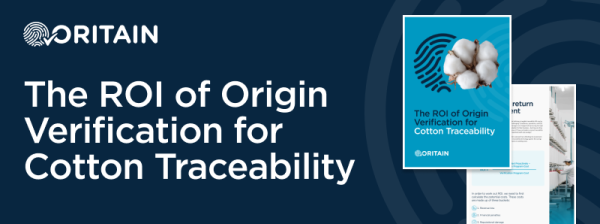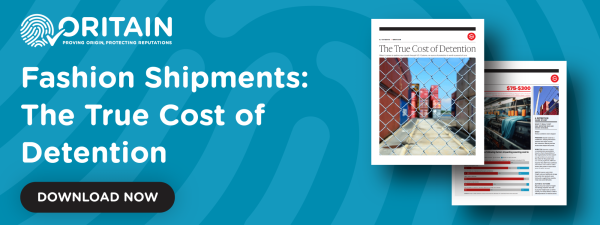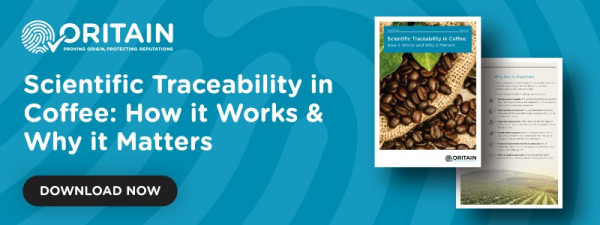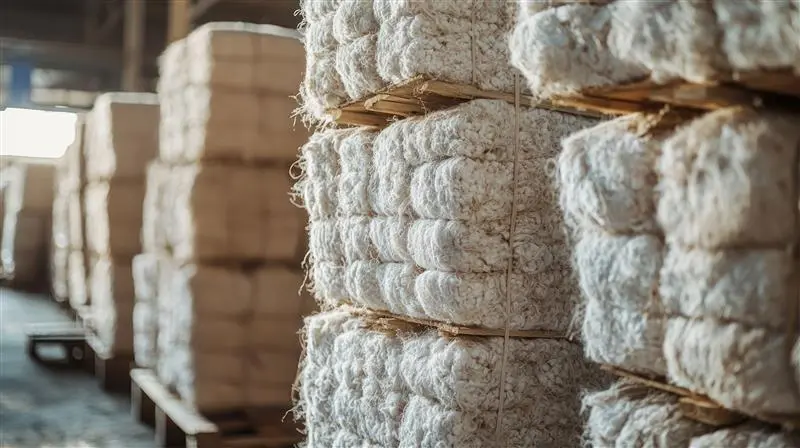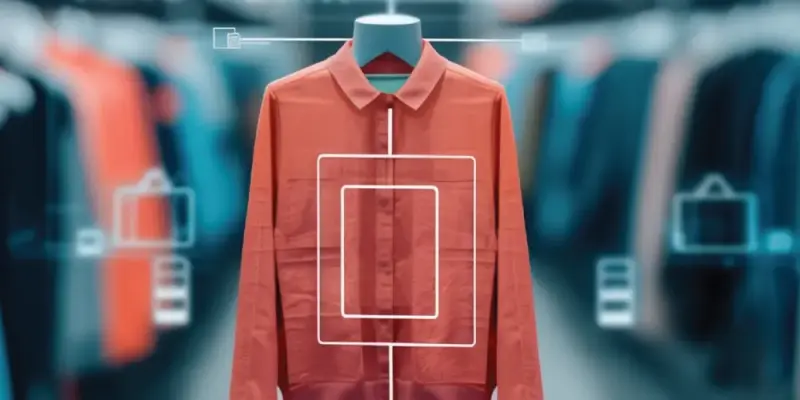Product Traceability 101: How it Works & Why it Matters
By Rupert Hodges | 31 July 2025
minutes to read.
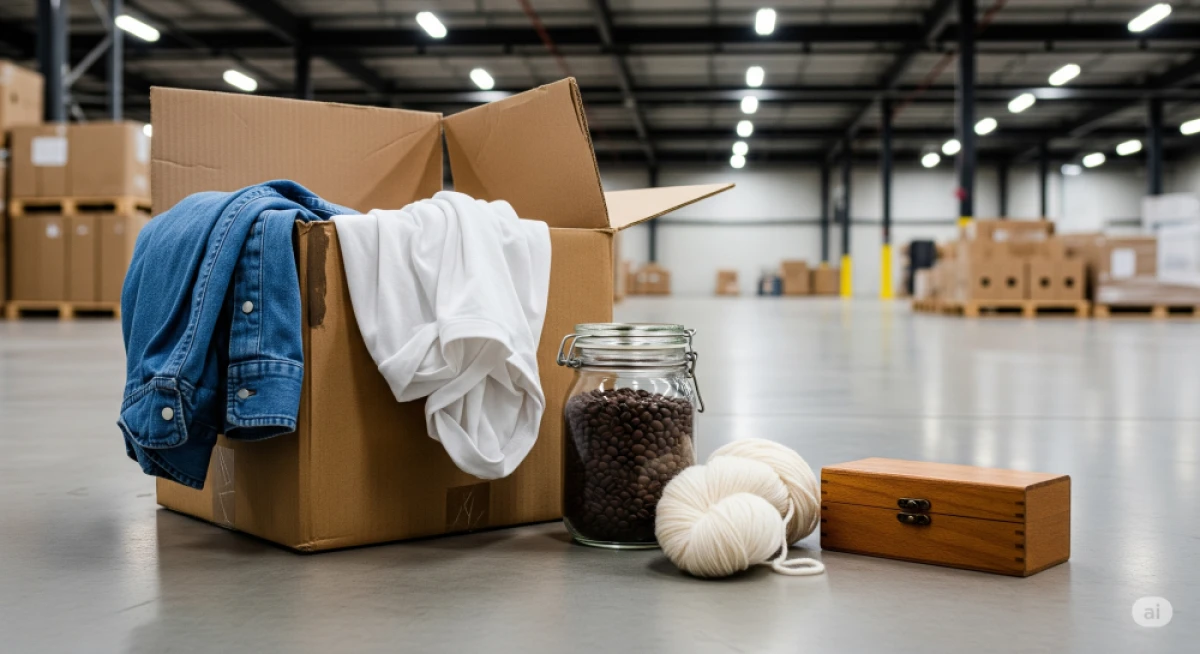
Product traceability has become ever more important to businesses. Done right, it helps keep regulators happy, operational processes humming, and customers purchasing.
But there’s a lot to consider. What types of traceability are there? How do they work? Which is best for me? How do I get started – and then, how do I scale?
In this guide, we’ll unpack product traceability to provide everything you need to know – how it works and why it matters. This is product traceability 101. Get comfortable – class is now in session.
Contents:
- What is traceability? Definitions and scope
- Why is traceability important?
- Types and models of traceability
- How traceability works: systems and processes
- Overcoming common challenges
- Real-world examples across industries
- Benefits of science in traceability
- Getting started with Oritain’s traceability solutions
1. What is traceability? Definitions and scope
In this section we’ll kick off with defining product and material traceability, explaining how traceability differs from simple location tracking, summarizing some common terminology, and introducing full supply chain visibility.
Product vs. material traceability
Products pass through numerous stages of a supply chain on their journey from raw material to finished product.
- Finished products have completed manufacture and are either ready for distribution or available for sale from retail outlets. They will have passed through multiple stages of a supply chain and have often had additional processing, such as dying for fashion garments or roasting for coffee beans.
- Raw materials are the base ingredients that are used in manufacturing a product. They have had no processing or treatments yet but will likely do so as they progress through the supply chain process. They are generally sourced direct from growers or farmers.
Traceability vs. tracking
Product traceability is charting the journey of a product back through the supply chain to point of origin. That is, where the materials that make it up were originally sourced from.
Traceability is used by participants throughout the supply chain and covers the entire lifecycle of the product from field or farm to retail shelf.
- Product tracking is pinpointing where a product currently is along a supply chain journey. It is not defining or tracing that product’s journey back through the supply chain. Tracking is solely a point in time. Tracking is most often used for inventory management and distribution.
- Traceability is primarily focused on product history while tracking is focused on the present. Traceability traces the journey, tracking the location – in real time.
Complete traceability & product tracing
Regulation and pressure from consumers have increased the importance for brands having visibility over their entire supply chain. Traditional models would look at only a brand’s immediate suppliers (often called Tier 1 suppliers), not which businesses in turn supplied them (Tier 2, Tier 3 and so on).
Full supply chain transparency is where brands have thorough understanding of each supplier they work with, who those suppliers are partnered with, and how every player fits into the product journey.
Supply chain mapping is required to achieve this, where the different vendors a brand works with are charted rather like a subway train map. It means that at a glance brands can see exactly who they work with, the nature of the relationship, and its role in product manufacture.

2. Why is traceability important?
This section addresses the importance and purpose of traceability. From compliance risk to consumer trust, it illustrates some of the key business objectives and challenges that product traceability can resolve.
Regulatory compliance & risk mitigation
Product traceability plays an important role in brands meeting the requirements of legislation. By tracing the journey of their products from point of origin, brands can determine the potential for association with illegal or unethical practices.
Certain areas of the world have prohibitions due to their recorded use of forced and child labor. Proving their apparel products aren’t made with cotton sourced from these areas is essential for fashion brands to comply with forced labor laws like:
The cost of detention due to noncompliance can be significant.
Traceability is also essential in the food and beverage sector to enable rapid product recall from any stage of manufacture to protect safety and quality.
Consumer trust & brand reputation
Traceability can prove that a product is what it’s claimed to be. That is, that it’s authentic to label. This is essential when consumers often pay a premium for products sourced from a particular part of the world or produced in a certain way.
Over two-thirds of adults believe that once a brand loses its trust, there’s no gaining it back. 40% of these people go further by trying to dissuade their friends and family to boycott these brands.
For example, pima cotton is a long cotton fiber that is softer than regular fibers. Garments produced using pima cotton therefore demand higher retail prices. Without the verification from tracing the product through the supply chain, brand claims could seem hollow or false.
A cotton traceability solution ensures cotton brands can prove the authenticity of their fibers and assures customers that they’re buying the genuine article. This strengthens brand reputation, consumer trust and confidence in the market.

Sustainability & ethical sourcing
Businesses have tended towards overstating or exaggerating their sustainability credentials in the past. An EU commission report found that 40% of green claims made by companies were “completely unsubstantiated”.
But consumers have low tolerance for this and new legislation, especially in Europe, is mandating against this. Regulations like the Corporate Sustainability Due Diligence Directive (CSDDD) require businesses to accurately monitor, manage and report on their sustainability and ESG impacts.
Combining sustainability and traceability enable businesses to prove their products were sourced from or produced in environmentally friendly ways. For example, a coffee brand can prove their beans come from land that has been sustainably farmed.
Traceability underpins brands’ ESG commitments. This mitigates the risk of brands being accused of greenwashing and ensures consumers can trust their sustainability and ESG claims.
Supply chain efficiency & integrity
Product traceability plays an important role in maintaining the integrity of supply chains. It can ensure that products haven’t been adulterated, substituted or blended in any way, whether deliberately or inadvertently.
Products that have been so affected can result in media scandals and customer boycotts, as well as serious threats to consumer health in sectors like food or pharmaceuticals. Accurate tracing of products allows brands to identify any potential issues and nip them in the bud early.
Traceability unlocks a range of operational gains for businesses, including greater product visibility, bottleneck identification, and disruption response.
But a study of global supply chains uncovered that only 6% of companies surveyed claimed to have achieved full supply chain visibility, despite it being the third most important priority.
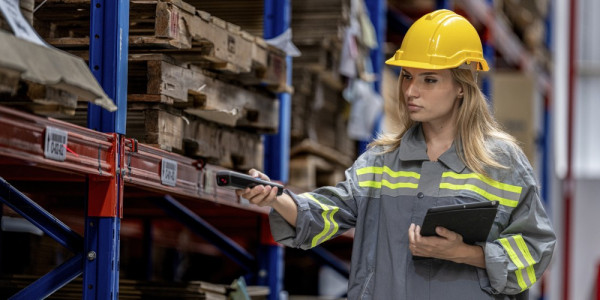
3. Types and models of traceability
In this section we delve into some common product traceability supply chain approaches and look at chain-of-custody frameworks.
Forward vs. backward traceability
Backward traceability is the process of identifying the origin of products or raw materials that are used to produce goods. It encompasses:
- Growers
- Farmers
- Other suppliers that provided them
This involves tracing back to the fibers from cotton fields, the beans from coffee farms or the ingredients in food products. Backward traceability tends to be origin-focused and used to address issues of product authenticity, sustainability and regulatory compliance.
Forward traceability is the tracking of finished products after they leave the manufacturer. This includes:
- Distributors
- Wholesalers
- Retailers
- End consumers
For the raw materials listed above, it tracks the finished garments, coffee packs and consumables. Forward traceability is destination-focused and used for issues like quality control, food safety and inventory management.
End-to-end vs. batch-level vs. item-level traceability
Product traceability can operate at different levels of granularity depending on the needs of the business.
- End-to-end traceability covers a product’s entire journey through the supply chain, from raw material sourcing, through processing and manufacture, to distribution and sale to end customer.
- Batch traceability relies on the use of lot numbers and product data to track entire production batches. Item level traceability is highly specific and uses serial numbers to identify individual units.
The level of granularity will generally be determined by the objectives of the business. If a business needs to recall a batch of food products, batch-level tracking will be employed. If a customer is missing delivery of a product they ordered, item level tracking will be required.
Product level traceability is often necessary to fulfill the requirements of legislation. For example, to verify the origin of product shipments to border authorities as part of forced labor compliance under the UFLPA.
Chain of custody models
Chain of custody documents the movement of products through a supply chain and the people or organizations involved. This is important because it ensures transparency of the process, security of the product, and accountability if issues arise.
A formal chain of custody should cover every stage from raw material to end customer. By documenting the product journey sequentially, it means that any problems can be traced back to a specific stage and a specific supplier.
Actions can then be taken at that stage to address the problem and preserve the integrity of the overall supply chain.
Typical chain of custody models are:
- Segregation (where products are physically separated to prevent mixing or contamination)
- Mass balance (where products aren’t segregated but their specific details are maintained)
Chain of custody is especially important for food and beverage products where consumer health could be threatened, or to help brands identify the source of product noncompliance.
4. How traceability works: systems and processes
This section examines different product traceability solutions, explains how the tools and platforms work, and provides some guidance on how to maintain traceability.
Unique identification & data capture
There are several methods of product traceability which can be termed ‘on-pack tracking’. These involve labels or electronic devices which are affixed to packaging and can be scanned by a reader to display product information.
The most basic examples of this are barcodes and QR codes, which are readily used by distributors for monitoring product delivery in real time.
More sophisticated alternatives are available in RFID tags (Radio Frequency Identification tags) and IoT sensors (Internet of Things sensors), which use built-in microchips to store information, and which can be accessed remotely.
Centralized & shared platforms
Businesses can support their supply chain management through a range of cloud-based traceability platforms. ERP (Enterprise Resource Planning) is a centralized tool for managing the demand and distribution of inventory. The platform uses automation to simplify the process of ordering stock, managing stock levels and forecasting future demand.
Blockchain and AI are digital traceability tools that use real-time tracking and monitoring to automate data collection and sharing.
- Blockchain records and verifies transactions using cryptography within a decentralized network.
- AI and machine learning analyze supplier data to identify any financial ties to banned entities.
Tools such as these are scalable and can handle large volumes of data but are only as reliable as the accuracy and transparency of data entered into the system.
Scientific verification & traceability
Scientific verification uses chemical analyses including isotopic testing and statistical modelling to accurately verify the origin of products and raw materials. By analyzing the intrinsic elements within the product itself, this method is robust and highly resistant to fraud. is robust and highly resistant to fraud.
Oritain’s traceability program integrates product-based verification with comprehensive product support to deliver a scientifically rigorous and holistic traceability solution.
The scientific precision of this methodology, that combines forensic chemistry and data science, effectively mitigates the risk of companies believing they’re procuring a compliant commodity, only to discover it’s sourced illegally or unethically.
This form of origin verification is based on techniques used for decades in the field of criminal forensics. Proven and reliable, scientific traceability has been used as evidence in courts of law around the world.
Isotopic testing is an accepted piece of evidence for UFLPA compliance, recognized by DHS and CBP guidance documents.
Maintaining traceability in practice
- To achieve the best results from your traceability program, it’s helpful to establish a dedicated supply chain management team. This team should be cross-functional, including representatives from procurement, legal, operations, compliance, and sustainability.
- Make technology investments in data management and reporting software to close any knowledge gaps and improve your overall risk oversight.
- Create a supplier engagement plan including clear objectives, expectations and accountability for suppliers. Establish a supplier code of conduct, arrange staff training and embed your requirements into new supplier onboarding programs. Ensure you maintain a regular cadence of communication and check-ins.
- Arrange periodic on-site audits, particularly for higher-risk areas. Physically visiting supplier premises help ensure suppliers meet expectations. It also allows for direct assessment of processes and identification of any new potential risks, such as blending or adulteration of products.
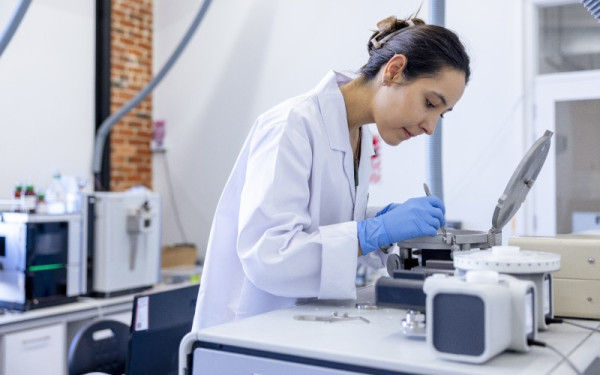
5. Overcoming common challenges
This section outlines some common supply chain issues that businesses may encounter and provides some examples of traceability procedures.
Data fragmentation & standardization
Large brands can have as many as 500 or more suppliers that they partner with to make their products. Traceability has become a valuable tool for overcoming the fragmentation of data that can result from this.
When businesses use multiple suppliers for their material sourcing, manufacturing, and distribution, it’s common for each supplier to produce different information.
Naturally enough, this information is focused solely on their slice of the value chain. Often one set of data doesn’t match or align with that from another supplier.
Traceability helps bridge these siloed systems by overlaying product-level data that connects all supply chain participants. It allows brands to map their product’s journey from start to end, maintaining visibility and traceability throughout, and ensuring all suppliers adhere to shared standards.
Multi-tier complexity & adoption costs
Today’s supply chains are long, complex and increasingly opaque. Raw materials pass through multiple hands and multiple stages of processing. In the past, brands would typically have little visibility beyond their immediate suppliers.
These multi-tiered supply chains often span different countries and regions. Many tiers won’t have a direct relationship with the next, making it difficult for brands to accurately trace where their products truly originate from.
Traditional paper-based traceability methods typically lack the precision required to navigate these complex networks. This has led to the increased adoption of scientific verification and similar tools.
While cost is a common barrier to brands adopting the tools necessary to build sustainable supply chains, the longer-term benefits in improved regulatory compliance, product equity, and consumer trust will far outweigh the investment.
Fraud & privacy concerns
Every link in a supply chain introduces the potential risk of supply chain fraud or record tampering. Raw materials can be contaminated, substituted or blended with noncompliant materials. Digital records can be falsified to mask unethical practices.
In this event, if a brand lacks adequate visibility over their supply chain they could suffer serious reputational fallout.
- Blended products could contain forced labor cotton which incurs shipment seizures and financial penalties.
- Falsified records could lead to a brand unknowingly sourcing timber from illegally deforested land.
Product traceability overcomes this by defining the product’s true journey back to origin.
Areas of risk can be traced to specific stages of production – and specific vendors. Science-based methods which analyze the product itself are more likely to accurately reflect the true origin.
By increasing supply chain transparency, traceability systems also help protect proprietary data and information security. This mitigates any risk of privacy blind spots and enhances trust between partners.
6. Real-world examples across industries
In this section we travel around the world to provide some examples of traceability and examine how traceability programs are helping overcome significant real-world challenges.
Cotton traceability
With the introduction of the UFLPA in 2022, fashion and apparel businesses have needed to prove their products aren’t made with materials sourced through forced labor.
Since then, more than ten thousand shipments worth over three and a half billion US dollars have been detained. UFLPA compliance for cotton importers has become essential.
Cotton is grown in over 75 countries, but once the fiber leaves the farm it passes through many hands, creating plentiful opportunities for substitution, blending, misrepresentation and ethical violations.
There is a high risk of substituting non-compliant cotton for certified cotton, often driven by cost savings. Transshipments are a growing challenge, where goods are routed through intermediary countries to hide their true origin. These practices compromise the integrity of the entire supply chain.
Cotton traceability has become essential for businesses to verify where their cotton truly comes from. Only then can they be sure of no association with banned entities at any point.
Coffee traceability
Coffee is a very resource-intensive industry. Millions of acres of forests are cleared every year to make way for coffee growing. But from 2025, the EU Deforestation Regulation (EUDR) prohibits products from deforested land being imported into or exported out of the EU.
As part of their deforestation compliance, coffee businesses, including retailers and wholesalers, will need to provide documentation geo-locating the plot of land that produced the beans. Verifying coffee point of origin is essential to ensure EUDR compliance.
A coffee traceability solution, which scientific origin verification can support, will enable brands to prove that their raw coffee beans aren’t sourced through deforestation, and mitigate the risk of noncompliance penalties, product seizures, and restrictions of trade.

Red meat traceability
Product traceability has become more important in the red meat sector as the commodity is also covered by the EUDR legislation.
Cattle ranching causes more deforestation than any of the other commodities covered by the EUDR. In the last six years, 800 million trees were cut down in the Amazon to accommodate global demand for Brazilian beef.
Several of the largest meatpackers dominating the Brazilian cattle industry are major exporters of beef products to the EU. Businesses like this will therefore need a red meat traceability solution to accurately trace the origin of their goods in order to comply with the EUDR.
Dairy traceability
Consumer demand for transparency in dairy products has made traceability an increasingly important part of the industry. Dairy traceability can verify that products like UHT milk, whole milk powder, infant formula and skim milk powder are authentic and true to label.
Product traceability is critical in food and beverage sectors where consumer health and safety are paramount. The consequences of not doing this were vividly illustrated in the milk formula scandals several years ago.
Traceability for other industries
As new legislation has entered the market, consumer expectations have risen, and competition has increased, product traceability has become a must-have for successful businesses.
- It’s used in the wool industry to prove the validity and quality of woolen garments.
- Leather brands use traceability to verify their goods don’t originate in cattle from deforested land.
- It’s also used to verify the authenticity of serum used to manufacture life-saving products in the high-stakes pharmaceutical industry.
The emerging needs of sectors like polysilicon and automobile manufacture mean the need for reliable product traceability will only continue to rise.
7. Benefits of science in traceability
This section introduces the world of forensic science, shows how it supports traceability and is used for origin product checks, and illustrates the link with brand reputation.
Forensic science-based origin verification
Product origin can be verified with high precision through forensic science. 'Origin Fingerprints' can be derived from analyzing the chemical compositions of plants, animals, and raw materials. These compositions are driven by specific factors unique to each location, including soil composition, precipitation, temperature, and altitude.
Oritain’s forensic science approach is so robust that it can verify product origin to the level of country, region, and even individual tracts of land in some cases.
This scientific provenance can be used by businesses to support traceability in auditing their products throughout the supply chain. Through this, they can identify any risk of illegal or unethical practices, like forced labor, deforestation, or product fraud.
It also reinforces their compliance with regulation and assures key audiences such as consumers and investors of their integrity.
Tamper-proof testing for integrity
While there are a range of product traceability solutions available to validate and track information within supply chains, forensic verification is a more robust method for authentication because it tests the product or raw material itself.
Traditional traceability methods often rely on packaging labels and paper documentation, which are easily tampered with and susceptible to fraud. These tools focus primarily on documenting the journey of packaging – not products. This makes it difficult to identify issues or noncompliance at the product level.
New tools like AI are useful for detecting financial and reputational risks, such as indirect ties to banned or unethical entities, but they don’t verify the physical origin of raw materials.
By scientifically verifying the true origin of their products, businesses can provide regulators with far stronger, more reliable evidence that their supply chain is compliant.
Consumer & brand confidence
Consumers are increasingly seeking transparency in product sourcing. They want to understand where the products they consume come from. Reading labels and researching products prior to purchase are now part of everyday shopping behavior.
But many consumers are unsure of the validity of pack-based product claims. Studies show that many adults don’t trust ingredient or product claims unless they’re proven by science.
Scientific traceability helps overcome consumer skepticism around excessive and misleading product claims. It provides independent, credible validation to build customer trust in the brand.
It’s also important for driving business growth, providing the science-based assurance of ESG credentials to potential investors. And it provides a unique differentiator to help ambitious brands stand out in a competitive marketplace.
8. Getting started with Oritain
In this final section, we provide some practical advice on how to run a pilot traceability program and successfully integrate this into your business. We round this off with additional resources that delve into some key subjects in a little more detail.
Pilot & integrate
Bringing a traceability program to life requires an implementation roadmap with clear objectives and outcomes. A typical 3-year program with Oritain, covering finished goods and raw materials for a fashion retailer, could look like this:
- Year 1: Initial assessment – focuses on establishing a baseline and identifying key risks.
- Year 2: Expansion and optimization – focuses on scaling and embedding traceability deeper into operations.
- Year 3: Full-scale integration – focuses on achieving long-term traceability impact.
A phased approach like this will evolve with the needs of the business. It delivers improved sourcing decisions, risk management, and long-term value, while ensuring investment levels are appropriate and manageable.
Scale & expand
As a business grows, its need for product traceability will increase to meet the requirements of regulators, customers and investors. Supply chains will come under greater scrutiny as shipment volumes rise and the brand enters new markets.
An effective traceability program is one that scales with the business. It must be able to accommodate both the precision of product-specific origin verification and batch-level traceability.
The phased approach outlined above enables a business to grow their traceability program organically, steadily expanding scope without overcommitting resources.
For example, testing volumes can be increased each year, beginning with a focus on just high-risk sourcing origins and ultimately expanding to encompass all products. Or product testing could initially be confined to finished goods only, before also capturing raw materials in subsequent years.
Working with a trusted partner to facilitate this will enable a business to seamlessly scale from batch-level to full end-to-end traceability.
Resources & webinars
Oritain provides a range of useful material to help businesses on their journey towards product traceability. These include whitepapers, guides, checklists, infographics, and on-demand webinars.
Our blog is updated regularly with insights, analysis, and latest market news from our leading science, traceability, and product experts.
Listed below are links to some of our most popular material.
- True Cost of Detention [whitepaper]
- Due Diligence Guide for Fashion Supply Chains [whitepaper]
- Isotopic Origin Verification [webinar]
- Compliance Trends for Fashion Brands [blog]
- How Product Traceability Drives Sustainability & ESG in Supply Chains [blog]
(Image credit: Vecteezy)
For more information on how to build an effective product traceability program that meets your compliance, sustainability, and business needs, contact us to speak with a member of the Oritain team.
Our global team have expertise across a wide range of industries and provide trusted support to many of the world’s leading brands. We’d love to work with you too.
Disclaimer: The information provided in this document does not and is not intended to constitute legal advice. Instead, all information presented here is for general informational purposes only. Counsel should be consulted with respect to any particular legal situation.

